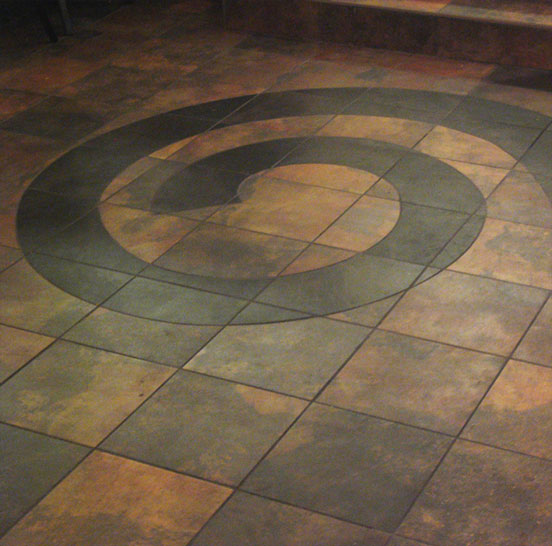Though a variety of tiles are available in the market these days but ceramic and porcelain tiles add a unique the touch of elegance and style statement to every household. However, many people are not aware of the differences between the two and end up misjudging both. This article is an attempt to differentiate between the two tiles.
Process of production
Ceramic tiles are made from ceramic material and clay; the clay could be either red or white and are fired in a kiln. Most of the ceramic tiles are refined with glaze, which is the prime reason for their pattern and color. On the other hand, porcelain tiles are made from porcelain clay through the dust pressed method and is then fired at 1300 degree Celsius for a longer period of time under high pressure. Both the tiles are environmental friendly as these tiles are made from completely natural raw materials, which are found in abundance in the area where the tiles are made, which also cuts down on the fuel consumption and transportation costs.
Appearance
Usually ceramic and porcelain have different appearances, colors, and patterns. Ceramic tiles are normally glazed in order to create various colors, patterns and designs but porcelain tiles are not glazed. The white chips in ceramic tiles are easily noticeable but the chips in porcelain are not visible as porcelain has the same color throughout the tile. Porcelain is a fully vitrified tile and since it is made through dust pressed method, the tile is denser and finer than the ceramic tiles. Due to its density and hardness, porcelain tile is more difficult to install. It generally involves specialized tool to cut and shape the tile for installation and is not ideal for D-I-Y installation. On the other hand, ceramics tiles are not very dense and are easily installed.
Durability
Porcelain tile is a very durable as compared to it ceramic counterpart. Porcelain is cooked at a higher temperature and twice the pressure as the ceramics and is therefore far more dense and harder. It can last longer and withstand high pressure than a ceramic tile would. It is ideal for use in wet and high traffic areas and can withstand all the wear and tear. On the other hand, ceramic is porous, has a higher absorption rate, and is not suitable for high traffic areas. Ceramic is more prone to cracking under heavy pressure whereas porcelain is more prone to chipping. Ceramic generally tend to crack or chip off if any object is dropped on it. Porcelain tile is expected to last longer than ceramic tile. Porcelain tile is highly recommended for the high traffic areas and most of the commercial spaces where as ceramic can only be used in light to medium duty commercial spaces. However, both the tiles can be used for the homes but one should always make it a point to use porcelain in the high traffic areas of the house. Ceramic and porcelain tiles have minimum of 50 years of lifespan, which is one of the reasons contributing to their sustainability.
Uses
Both the tiles can be used on the walls and ceiling. They are used as countertops and can even be used in shower areas. Porcelain is a very versatile tile as it can be used for outdoors as well as indoors but ceramic is only used indoors. Porcelain and ceramic tiles can easily be cleaned by water and PH neutral cleaners but the usage of any chemicals should be avoided, which might find its way into our ecosystem.
Conclusion
If you wish to install the tiles in your residence, both the tiles with their unique features will be helpful in bringing about that difference. They will not just enhance the beauty of your home, but are eco-friendly as well. However, porcelain is a better option for overall application as it is a very versatile tile, along with being more durable and hard to crack and chip. It can be used for both residential as well as commercial applications and can be used both outdoors and indoors.




